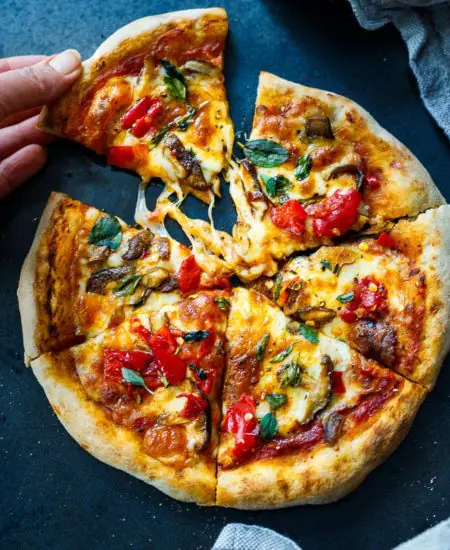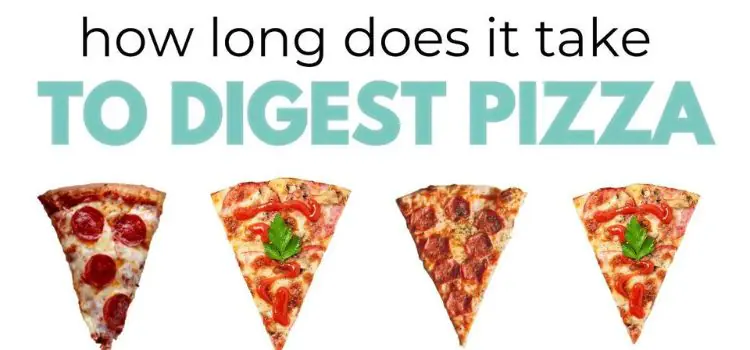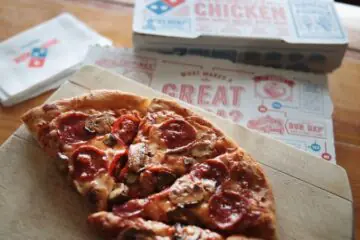It typically takes around 6-8 hours to digest pizza in the stomach. Pizza, especially with high-fat toppings, can take longer to digest due to its fat and protein content.
Factors such as individual metabolism and the specific ingredients of the pizza can also affect digestion time. Additionally, consuming large portions can further prolong the digestive process, leading to potential discomfort and indigestion. The time it takes to digest pizza can significantly impact overall health and well-being.
Understanding the digestion process of pizza is crucial for making informed dietary choices. By comprehending the complexities of pizza digestion, individuals can better manage their portion sizes and ingredients to optimize digestive comfort. It’s essential to consider factors such as meal composition and consumption patterns to promote efficient digestion and overall wellness. Understanding how long pizza takes to digest can empower individuals to make mindful choices for their health and dietary satisfaction.
The Process Of Digesting Pizza
The process of digesting pizza is a complex but fascinating journey that occurs within our bodies after consumption. It involves various stages within the digestive system, each serving a specific purpose in breaking down the components of the pizza and extracting essential nutrients. Understanding the process of digestion can provide valuable insights into our overall health and wellness.
Ingestion And Chewing
When you eat a slice of pizza, the process of digestion begins in the mouth. As you take a bite and chew, the food mixes with saliva, which contains enzymes that start breaking down the carbohydrates in the crust and other components of the pizza. Chewing also helps to mechanically break down the food into smaller particles, making it easier to swallow and digest.
Digestion In The Stomach
After swallowing, the chewed pizza enters the stomach, where it encounters acidic gastric juices. These juices, primarily composed of hydrochloric acid and enzymes, work together to break down the proteins, fats, and carbohydrates in the pizza, further aiding in the digestive process. The stomach’s churning action helps mix the pizza with these gastric juices, forming a semi-liquid substance known as chyme.
Breaking Down In The Small Intestine
Once the partially digested pizza leaves the stomach, it enters the small intestine, where the majority of the nutrient absorption takes place. Here, digestive enzymes from the pancreas and bile from the liver continue to break down the pizza into even smaller molecules, allowing for the absorption of essential nutrients such as carbohydrates, proteins, and fats into the bloodstream.
Absorption Of Nutrients
The nutrients derived from the digested pizza are absorbed through the walls of the small intestine and transported to various cells and tissues throughout the body. Carbohydrates are broken down into sugars, proteins into amino acids, and fats into fatty acids, all of which play vital roles in providing energy and supporting various physiological functions.
Passing Through The Large Intestine
Any remaining indigestible components of the pizza, such as fiber, pass into the large intestine, where water and electrolytes are absorbed, and the waste is formed into feces. The colon plays a crucial role in reabsorbing water and maintaining the body’s electrolyte balance before the eventual elimination of waste through bowel movements.

Credit: www.feastingathome.com
Factors Influencing Digestion Time
When it comes to digestion, the time it takes to process and absorb nutrients can vary based on several factors. Digestion time for pizza, a popular and indulgent dish, is no exception. Understanding the influence of ingredient composition, an individual’s metabolism, portion size, impact of toppings, and the role of enzymes can provide insight into the digestion process.
Ingredient Composition
The composition of the pizza, including the type of crust, cheese, and meat or vegetable toppings, plays a significant role in determining digestion time. For instance, a thin-crust pizza with lighter toppings may be easier to digest compared to a thick crust loaded with heavy cheeses and processed meats.
Individual’s Metabolism
An individual’s metabolism also contributes to the digestion time of pizza. A faster metabolism may lead to quicker digestion and absorption of nutrients, while a slower metabolism can prolong the process.
Portion Size
The size of the pizza consumed directly impacts digestion time. Larger portions require more time for the stomach to break down the food and for the intestines to absorb the nutrients.
Impact Of Toppings
The specific toppings on a pizza can influence digestion time. For example, pizzas with greasy and fatty toppings may take longer to digest due to the higher fat content, while vegetarian pizzas with lighter toppings may be digested more quickly.
The Role Of Enzymes
Enzymes present in the digestive system play a crucial role in breaking down the components of pizza. The presence of specific enzymes can affect the digestion rate, impacting how quickly the body processes the pizza.
Expert Tips For Easing Pizza Digestion
Enjoying a delicious slice of pizza is a treat, but it can sometimes cause discomfort during digestion. However, there are expert tips that can help ease the digestion process and make your pizza experience more enjoyable.
Choosing Healthier Pizza Options
When it comes to easing pizza digestion, the type of pizza you choose plays a significant role. Opt for thin-crust pizzas, which are generally lighter and easier to digest compared to thick, greasy crusts. Selecting healthier toppings such as vegetables and lean proteins can also contribute to better digestion.
Eating Moderately
Moderation is key when it comes to enjoying pizza without experiencing digestive discomfort. Avoid overeating by sticking to a reasonable portion size and savoring each bite. Eating slowly and chewing thoroughly can aid in the digestion process.
Considering Digestive Aids
If you often struggle with pizza digestion, consider incorporating digestive aids. Enzyme supplements like lactase, protease, or probiotics can assist in breaking down fats and proteins, reducing the likelihood of discomfort after indulging in pizza.
Post-meal Activities
Engaging in light physical activity after consuming pizza, such as taking a stroll, can help stimulate digestion. Additionally, avoiding lying down immediately after eating can prevent acid reflux and aid in the digestion process.
Seeking Professional Advice
If you frequently experience digestive issues after consuming pizza, consult a healthcare professional. They can provide personalized recommendations and identify any underlying conditions that may be affecting your digestion.
Frequently Asked Questions For How Long Does It Take To Digest Pizza
How Long Does Pizza Stay In Stomach?
Pizza generally stays in the stomach for 6-8 hours. Overeating it may lead to weight gain and health issues.
Will 2 Slices Of Pizza Ruin My Diet?
Eating 2 slices of pizza might fit into a balanced diet, but excessive consumption can lead to weight gain. Pizza contains saturated fats that may increase cholesterol levels and risk of heart disease. Eating it regularly in large amounts can have negative health effects.
Consider portion control and balance.
What Food Takes The Longest To Digest?
Pizza, specifically with high fat and protein content, takes the longest to digest, up to 6-8 hours.
Is 4 Slices Of Pizza Too Much?
Eating 4 slices of pizza can lead to consuming too many calories and potential weight gain over time. Pizza is high in saturated fats and can increase cholesterol levels and risk of heart disease. It is best to limit pizza intake for better health.
Conclusion
The time it takes to digest pizza can vary based on several factors. The type of pizza, your overall health, and your eating habits can all impact the digestion process. While pizza can be an enjoyable treat, it’s important to consume it in moderation to avoid potential health issues.
Practicing mindful eating and making healthy choices can help support optimal digestion.

As the author of the “Ultimate Pizza Guide: Recipes, Tips & Secrets Revealed,” I’m dedicated to sharing my love for pizza and empowering others to create delicious homemade pizzas with ease. Join me on a journey to uncover the secrets to perfecting your pizza game!



